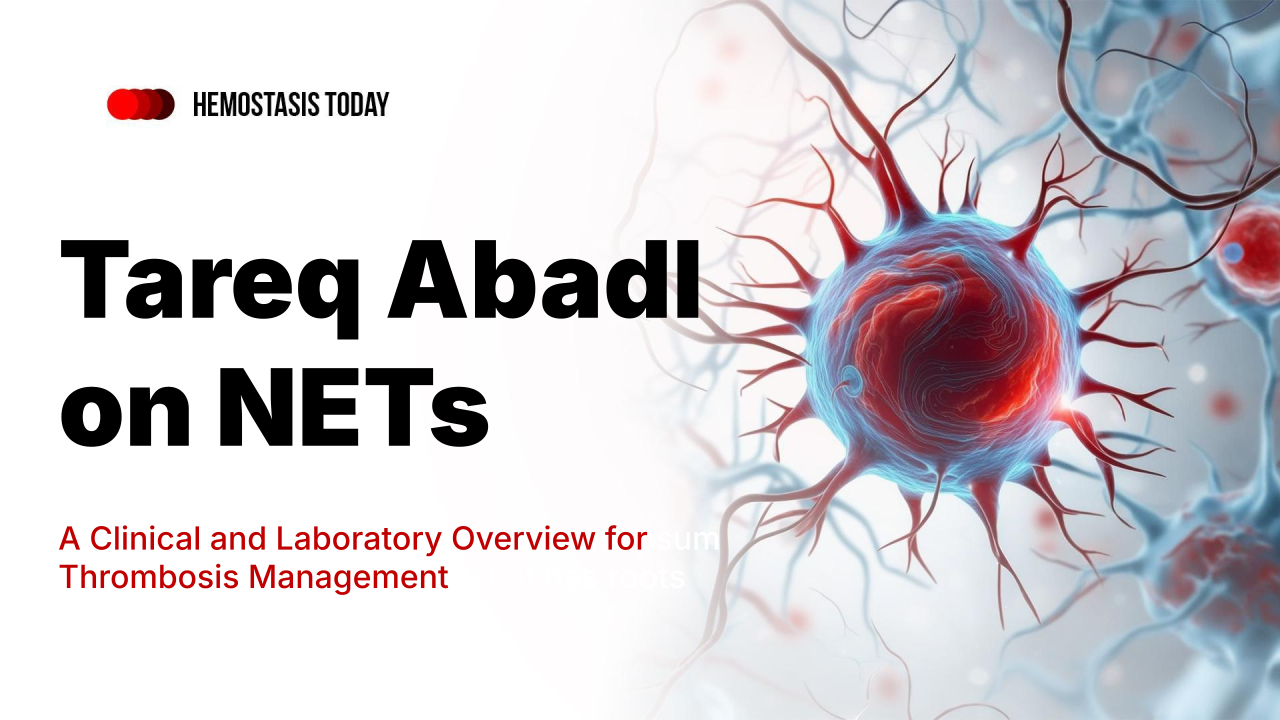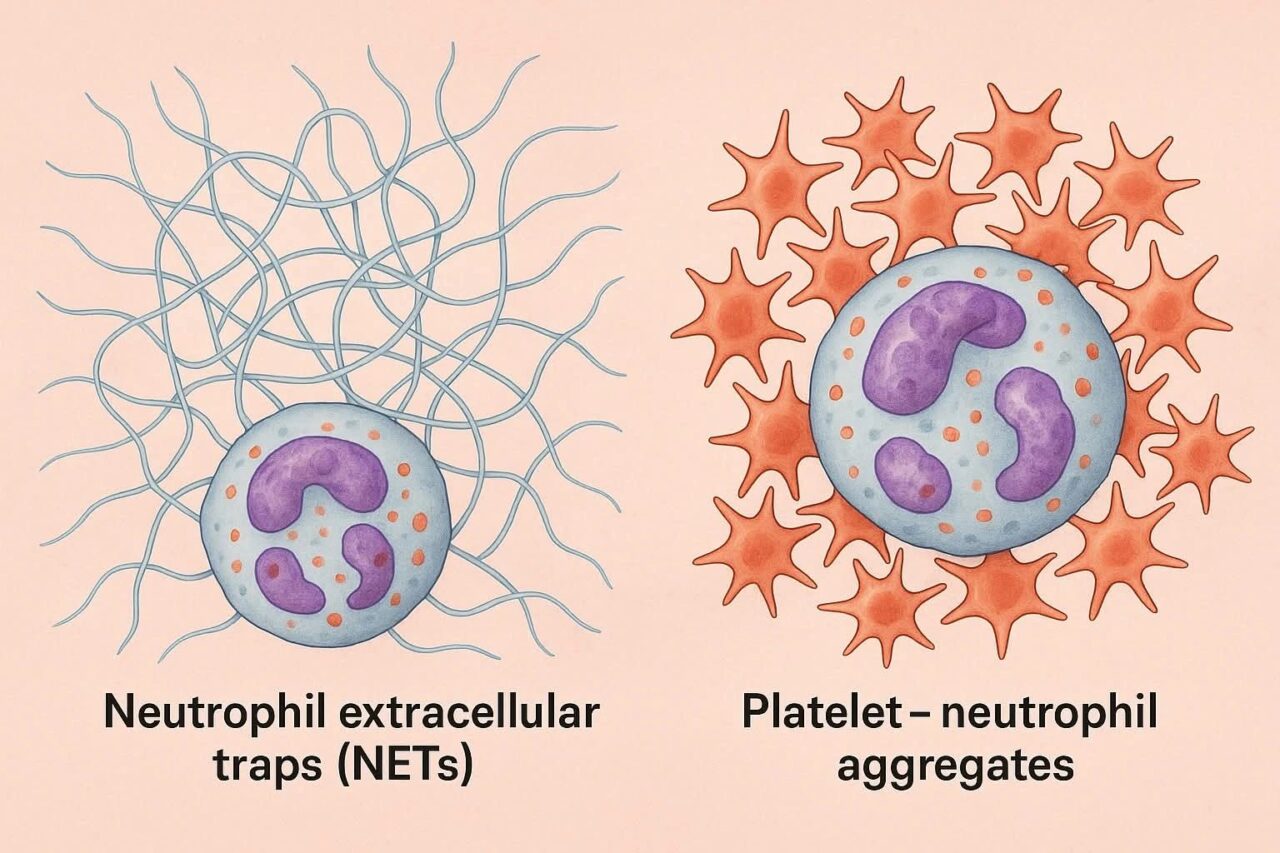
Tareq Abadl on NETs: A Clinical and Laboratory Overview for Thrombosis Management
Tareq Abadl, Medical Laboratory Specialist and Director of the Blood Bank at Dr. Abdelkader Al-Mutawakkil Hospital, posted on LinkedIn:
“Neutrophil Extracellular Traps (NETs) and Platelet–Neutrophil Aggregates
- Short Introduction
NETs are mesh-like webs of chromatin coated with neutrophil proteins (histones, MPO, elastase). They trap pathogens but also create a procoagulant scaffold that binds platelets, activates coagulation, and promotes thrombosis. NET-driven thrombosis is seen in sepsis, severe COVID-19, cancer, autoimmune diseases, and device-related clotting.
- When to Suspect NET-Driven Thrombosis
Unexplained or recurrent thrombosis with significant inflammation (↑ CRP, ↑ ferritin) or neutrophilia.
Thrombosis with severe infection, malignancy, autoimmune flare, ECMO/LVAD/HD devices, or poor response to standard anticoagulation.
Microvascular thrombosis with organ dysfunction out of proportion to typical causes.
- Practical Laboratory Assays
MPO–DNA or nucleosome ELISA → detects NET fragments (sensitive, limited specificity).
Citrullinated histone H3 (H3Cit) ELISA/Western → more specific for PAD4-dependent NETosis.
Cell-free DNA (cfDNA) → sensitive but non-specific.
Flow cytometry for platelet–neutrophil aggregates (CD45+/CD15+/CD66b+ with CD41+/CD61+).
Functional assays: thrombin generation ± DNase or NET inhibitors.
Histology/IF (DNA + MPO/H3Cit colocalization) → gold standard for NET-rich thrombus.
- Specimen and Pre-Analytical Requirements
Tube type: follow assay SOP; avoid heparin in DNA-based assays.
Processing: double-spin plasma; avoid buffy coat contamination.
Storage: aliquot, freeze at −80°C, avoid repeated freeze–thaw.
Documentation: infection status, inflammatory markers, device exposure, anticoagulation therapy, processing times.
- How to Interpret
↑ MPO–DNA or H3Cit → supports NET involvement; must correlate clinically.
↑ Platelet–neutrophil aggregates → indicates platelet-driven neutrophil activation/NET potential.
Functional confirmation: reduced thrombin generation after DNase supports NET-dependent clotting.
Trend > single value: rising markers before events are more meaningful.
- Clinical Implications
NETs may be targeted using DNase, anti-inflammatory therapy, or investigational PAD4 inhibitors—coordinate with hematology/critical care.
Device-related NET-rich thrombosis may require optimizing device flow/coating plus tailored anticoagulation.
NET markers are adjunctive, not a replacement for standard diagnostics.
- Pitfalls and Limitations
NET assays lack standardization; always report method and reference ranges.
Delayed processing or leukocyte lysis can cause false elevations.
cfDNA is non-specific; H3Cit is more specific but assay-dependent.
Many assays are still research-level rather than routine clinical tests.”

Stay updated with Hemostasis Today.
-
Nov 24, 2025, 14:19The ISTH Pulse Is Now on LinkedIn․ Stay Connected, Stay Informed
-
Nov 24, 2025, 14:18From Ticagrelor to Prasugrel․ ISAR-REACT 5 Findings Redefine Clinical Practice
-
Nov 24, 2025, 14:17Mohamed Magdy Badr: Compression Therapy Doesn’t Guarantee Healing
-
Nov 24, 2025, 14:16Ravi Kumar: Vitamin K Antagonists Remains the Gold Standard in APS
-
Nov 24, 2025, 14:13Keith Siau: Fish Oil Halved Cardiovascular Risk in Hemodialysis Patients
-
Nov 24, 2025, 10:25Jean Jacques Kiladjian Visits INSERM-supervised CIC 1408 Investigation Center
-
Nov 24, 2025, 10:06Amirpasha Moetazedian Invites a PHD Student to His Lab to Explore Sustainable Artificial Blood Vessels
-
Nov 24, 2025, 09:41Kamran Hajiyev Reflects on A Week of Innovation, Collaboration, and Scientific Exchange at SVIN 2025
-
Nov 24, 2025, 02:55Do You Know Why Clot Contracts? Marin Pavlov Reflects on Expert PE Conference 2025
